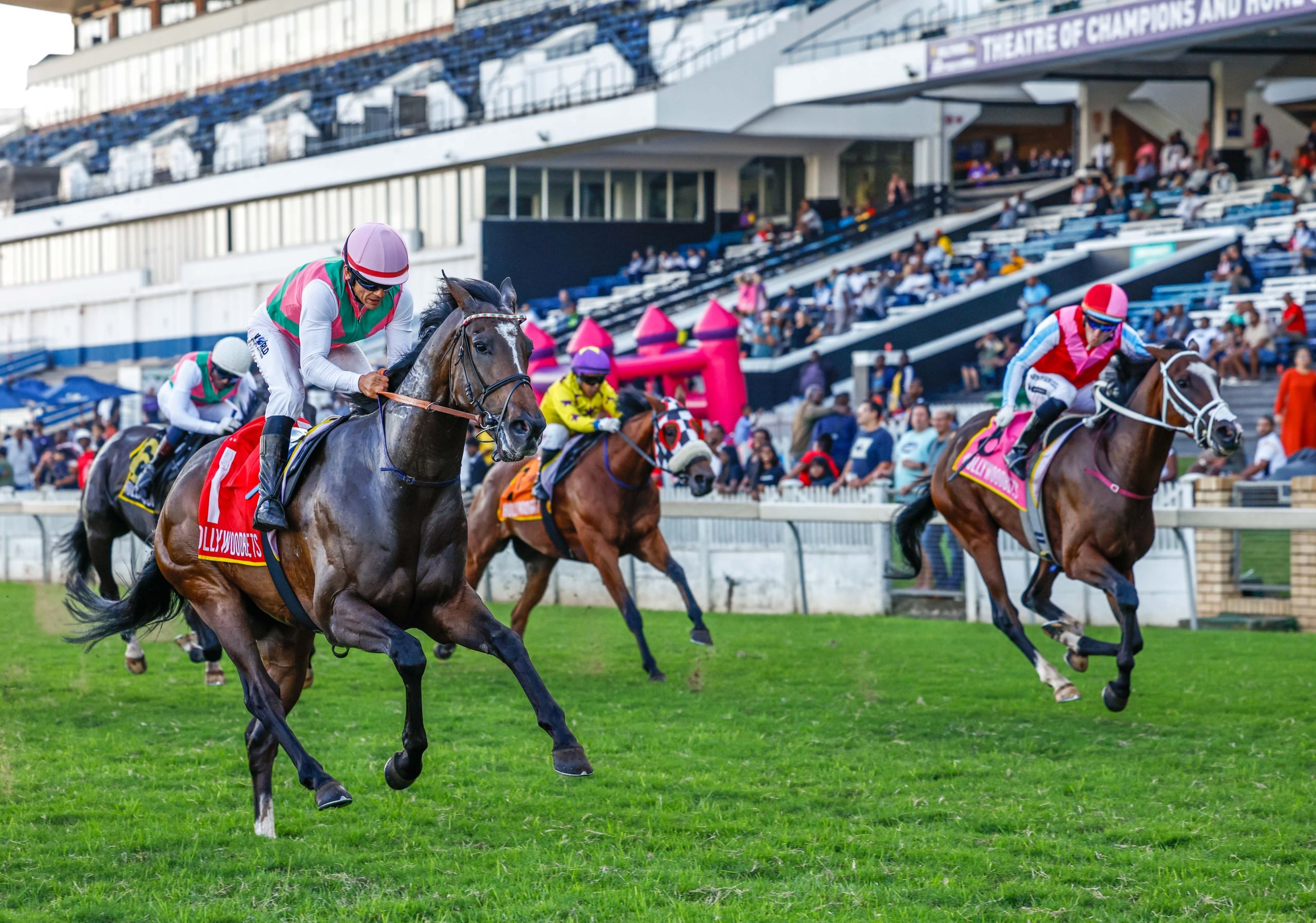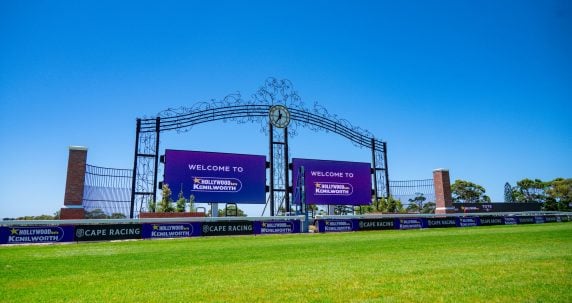Cape racing folk will remember the wonderful Pat O’Neill , who passed away in June 2019.
This is what we wrote about this wonderful woman of the world.
Her husband, Olympian and Manly legend Francis ‘Frank’ O’Neill has died recently, aged 97.
Passing peacefully in his sleep, he has left behind a life so well lived.
By invitation, we sat down with his partner of 30 years, Jan Garrett, this week to reflect on Frank’s legacy; a story so abundant and at times fantastical, we needed a few extra days to process before we could share it all with you.
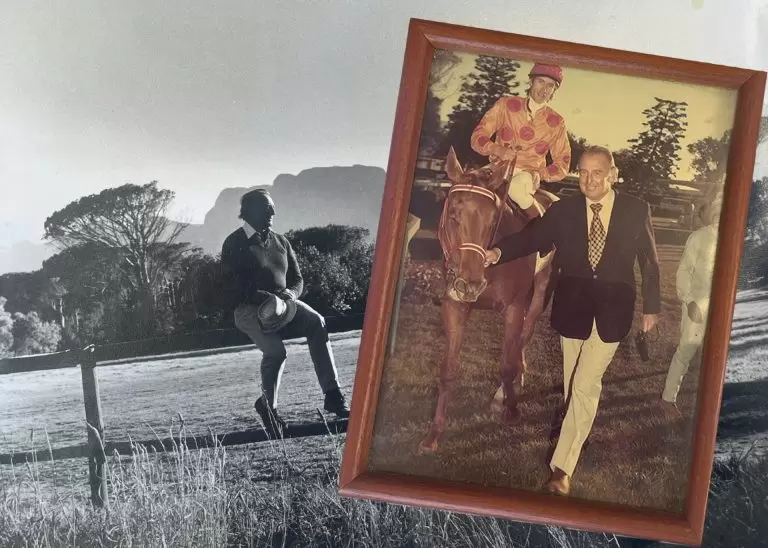
The amazing life of Frank O’Neill (Pic – Manlyobserver)
Here is a reflection on the Northern Beaches local who, inadvertently, paved the way for revolutionary cultural movements in Australia.
Frank was most prominently known for captaining the Australian Swimmers at the 1952 Helsinki Olympics, as well as, breaking two world records for the 400m medley at the North Sydney Olympic Pool in the same year.
Post his competitive racing career, Frank became a successful entrepreneur.
“He was a very, very, very, very charming man, and very kind, and also very generous. I think to the point he was too generous with people,” Jan retold.
“He used to sort of just travel first class around the world, never thought of maybe investing money in something. He just gradually but surely spent his money, but he had a marvellous life.”
Winding back…
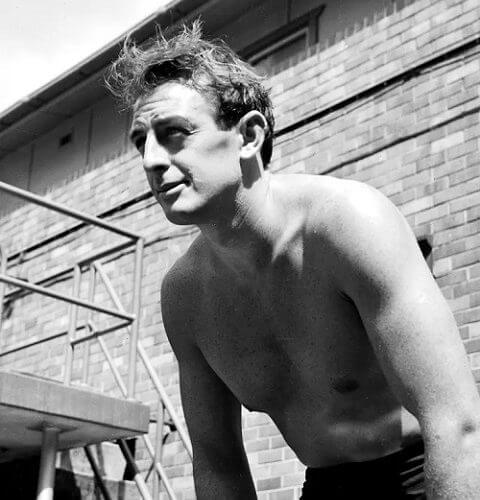
Oylmpic Swim Team Captain – Frank O’Neill in his hey day (Pic – Australian Olympic Committee)
In 1958, Frank O’Neill’s Olympic Swimming School was constructed in Pymble, providing lessons to North Shore and Northern Beaches residents. He also owned a profitable national pool building business.
The pools were an innovation of Australian design for two reasons: the method of concrete construction, which Frank adopted from America, and their dome curvature, which birthed a new style of skating around the nation – but we’ll get to that later.
By the age of 41, Frank was retired. He had accumulated a healthy amount of wealth from the sale of his business and Bower St home and wanted to rekindle his marriage with his ex-wife, the Honourable Patricia Cavendish O’Neill, a wealthy heiress of an Irish Countess with ties to the Australian Lindeman wine family.
So, beginning a whole new chapter of his life, the forever risk-taker took off to Africa, where he would soon remarry and breed horses.
But first, the beginning
The O’Neill’s were a well-known family around the Northern Beaches. Frank had two sisters, Meg and Betty. His father, Tom O’Neill, was a WWI veteran and managed the Manly Baths – after helping rebuild them in 1924. It became a place where his son developed his webbed feet.
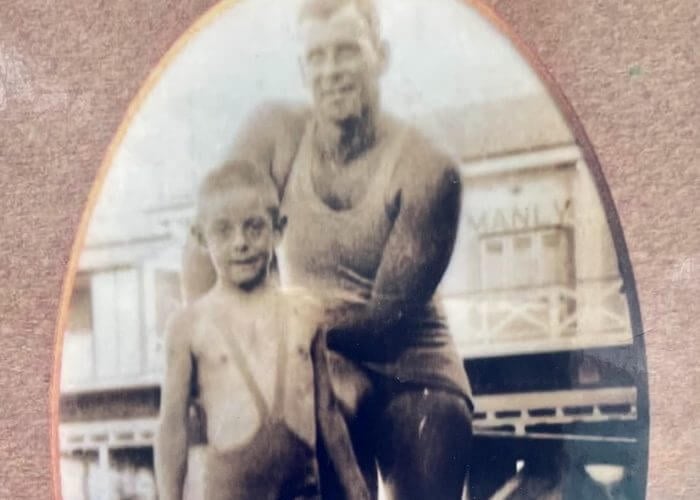
Frank O’Neill as a five-year-old boy with famous Olympic champion Andrew “Boy” Charlton pictured at Manly Baths in 1932 (Pic – Frank O’Neill Family Collection)
His mother, Etta, apprenticed the young athlete to become a dental mechanic and although this didn’t eventuate into a career, it did fund Frank’s endeavours when chasing the Olympics in London.
The Manly Baths, now just a remnant of where Manly Yacht Club stands, ran for around 80 years. The site was incredibly popular, drawing in large crowds and Olympic athletes such as Andrew ‘Boy’ Charles, Sweden’s Arne Borg and yank, Jack Medica.
Multiple world records were set and broken at the site – including by Frank himself. The pool was where Frank discovered his aquatic abilities and paved the way for his early career.
Humble beginnings turned into championships at the 1950 Auckland Empire Games (now named the Commonwealth Games) with Frank winning two 2nd place podium finishes for freestyle heats and 1st place for the Water Polo exhibition tournament.
In 1952, after vigorous training and previous failed attempts, he was not only off to the Helsinki Olympics, but captaining the Australian Swimmers, placing 3rd in the 4 x 200m Freestyle Relay.
The following year, Frank became a two-time world record breaker for the 400m medley, making waves at the North Sydney Olympic pool.
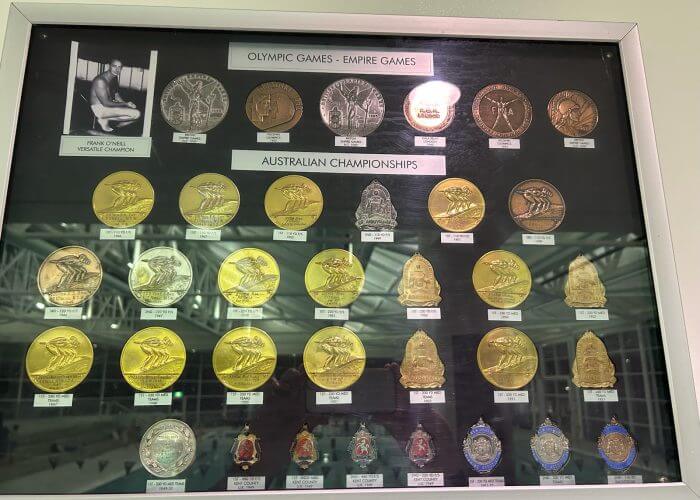
Frank O’Neill’s medals are on display at the Andrew “Boy” Charlton Aquatic Centre, Manly (Pic – Courtesy Manly Swimming Club)
But this was not the first time the young swimmer had broken a world record. Frank became the first Australian to swim under 60 seconds for 110 Yards Freestyle, finishing with a time of 59.9.
Frank was said to be the eye of many women, who would dive in the baths, “to try and get close to him and touch him as he was doing a turn,” Frank’s partner Jan shared, also admitting to admiring the young swim teacher from afar.
“I actually used to go down to Manly Baths when I was very young and I saw Frank from the distance and I thought I’m going to go out with him one day,” she added.
Frank was said to be the eye of many women, who would dive in the baths, “to try and get close to him and touch him as he was doing a turn,” Frank’s partner Jan shared, also admitting to admiring the young swim teacher from afar.
However, it would be some time until this manifested relationship would come to fruition. The couple would get together briefly in the 60s, but it wouldn’t be until the late 90s that the relationship would stick.
For now, 25-year-old Frank was living in the South of France with his wife, the honourable Patrica Cavendish O’Neill.
Patricia’s mother, Enid, was born into the Australian Lindeman wine family and was the widow of four millionaires, one being Viscount Furness, one of the world’s richest men at the time.
While living in France, Frank taught swimming at Enid’s pool at Cap Ferrat on the French Riviera where he coached his fair share of celebrities, including Greta Garbo, Ginger Rogers and Somerset Maugham among others.
Despite his feats, Frank was ultimately unhappy with his Olympic debut results; his head was elsewhere during the event. Patricia had written to him while he was training for the Games in Townsville – she had applied for a divorce.
Frank’s constant absence while training for swimming in Australia was too much separation for his wife. He attempted to reason but she ‘wasn’t having a bar of it’. The Olympic swimmer returned to his parents’ West Esplanade residence.
King of the pool builders
Patricia’s mother had promised Frank £20,000 (about AUD$1.38 million today), after the marriage ended. But that money would never come to be.
After winning medals at the Olympics and marrying into a noble family just a year earlier, Frank found himself once again broke and living with his parents. Frank was at a low point and needed to rely on professional swim coaching kids in order to get by.
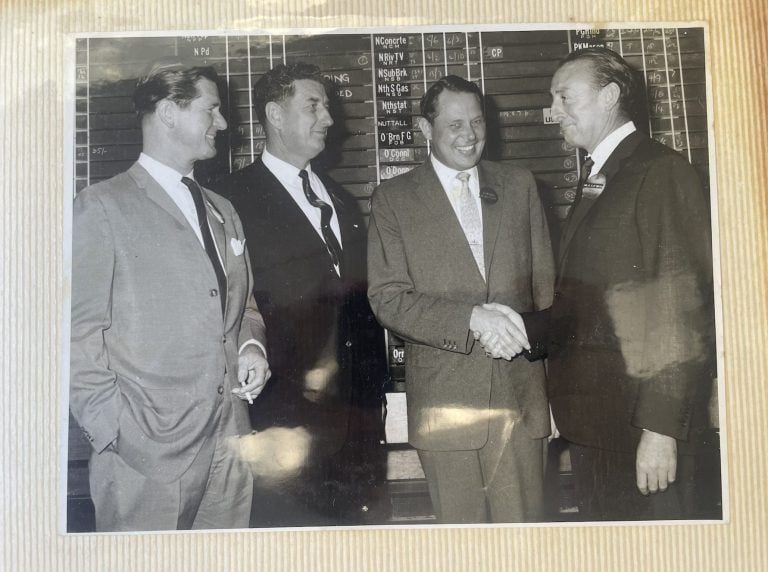
Frank and partners registering his business on the public Stock Exchange. L-R – Ken Stephens, Ellis Champion, a director of the Stock Exchange, Frank O’Neill (Pic – Manlyobserver)
He soon began to develop a vision for his very own swim school. It would become equally prolific and expensive. Frank made his money busing from Manly to Narrabeen and Dee Why, in the mornings, for swim teaching lessons, as well as in the afternoons at the Baths.
After much swim coaching and some odd jobs here and there – including a few weeks in the mines – he eventually had enough to fund Frank O’Neill’s Swimming School in Pymble which opened in 1957.
Frank went into business with Ellis Champion and Ken Stephens. The pool quickly became very popular and even more so after a heated indoor pool fit with a sauna was added, allowing the business to efficiently run through winter.
Soon, Ellis Champion suggested the company begin constructing pools for people’s backyard, and so they did.
Each pool cost around $12,000 (over $270,000 today). In their first year, the national company built 30 pools around Australia, and by 1964 were completing around two a day.
The Manly entrepreneur eventually heard of a more efficient way of pool building from the States which would change the way pools were constructed in Australia.
The innovation came in the form of a pump which would spray concrete rather than a person traditionally slabbing it on. The method would go on to be called Spraycrete and it cut their construction expenses exponentially.
“He brought out Spraycrete,” Jan explained. “And if only he got the copyright for that, he would have made an absolute fortune!”
Frank’s swimming coach and pool business thrived for a decade, but by the late 60s the Olympian received a letter from his ex-wife’s mother. They wanted him to visit them in Africa.
Excited by this proposition and eager to rekindle his old flame, Frank decided to drop everything for a second shot at love.
He promptly moved to Kenya and was remarried and retired at the age of 43. His shares of both his businesses were sold and their concrete company was eventually turned into Pioneer Concrete, which sold again to Dunlop. The company did not build pools, so ultimately Frank’s Pymble pools were abandoned. It was at this time a revolution began.
Skateboarding’s vertical incline
To Frank’s knowledge, this is where his pool empire ended, and for almost the entirety of his life, this remained true until a man named Jon McGrath called Jan’s home a few years ago.
“Someone contacted me about two years ago, it was a guy that used to do skateboarding and asked if I realised that skateboarding became very famous in Australia from Frank O’Neill’s swimming pools?” Jan said.
Unbeknownst to Frank, his unprecedented technique of spraying concrete rather than pouring it, while also phasing out traditional rectangle pools with irregular shapes, had become rather popular among skateboarders.
The technique initially implemented to cut the costs of pool construction, inadvertently kicked off a new style of Australian skateboarding.
Jan and Frank would spend their time as they did over 70 years ago, enjoying the scenes of Manly and travelling the world, but this time with each other.
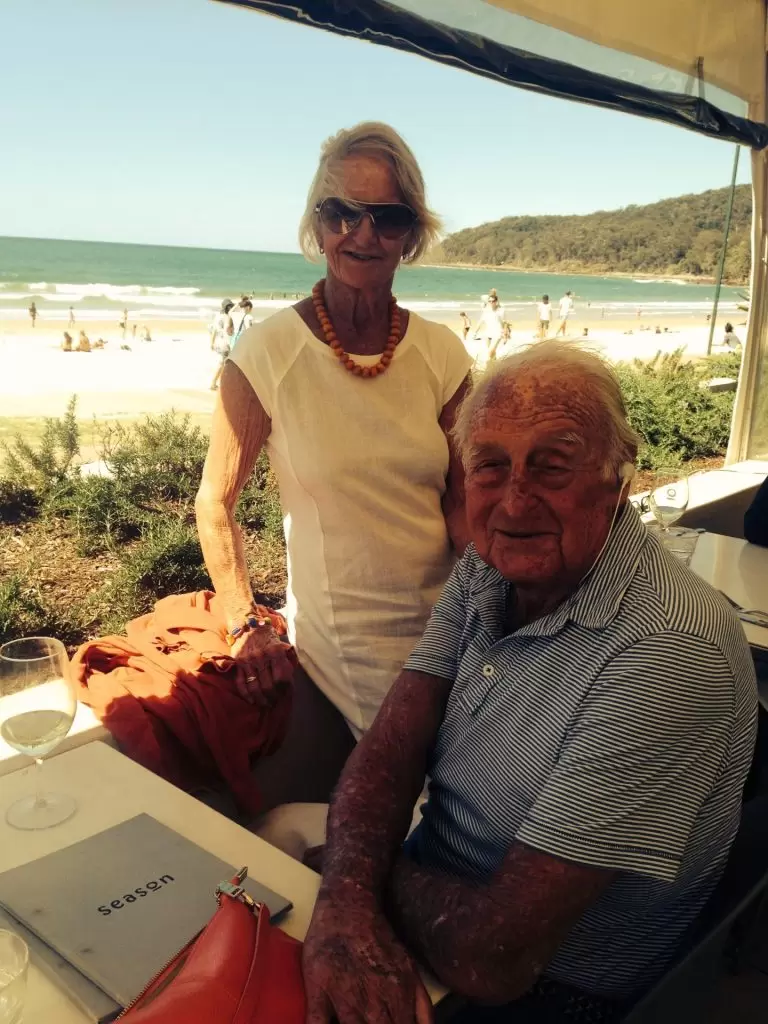
Frank and his partner Jan (Pic – Manlyobserver)
Frank even ran the Olympic torch through Goulburn for the 2000 Sydney Olympics – although Jan admits they were admittedly scratching their head as to why he didn’t run through Manly.
By far one of the pairs’ favourite activities was visiting the Andrew ‘Boy’ Charlton Pool, named after the Olympic swimmer and Frank’s longtime friend.
Even in his 90s, the well-lived Manly local would do as he had always done, swim. He joined the Charlton club’s winter swimming group and even won the over 80s relay at one stage.
“He used to love going down to the pool,” Jan recalled.
“He made a lot of friends down at the Boy Charlton Pool and would sit around, do a few laps and then have a cup of coffee.”
Frank immensely enjoyed his time at the swimming centre and the feeling was mutual. The Olympic great donated 79 of his medals, presenting them to the president, Tom Crawford.
It was a life well lived and will be a legacy well kept.
Frank will be laid to rest at the Frenchs Forest Cemetery in the chapel, at the age of 97.
Olympic officials have apologised for being unable to attend Frank’s funeral due to the Paris Games happening simultaneously, but have sent an Olympic flag to be placed on the coffin.
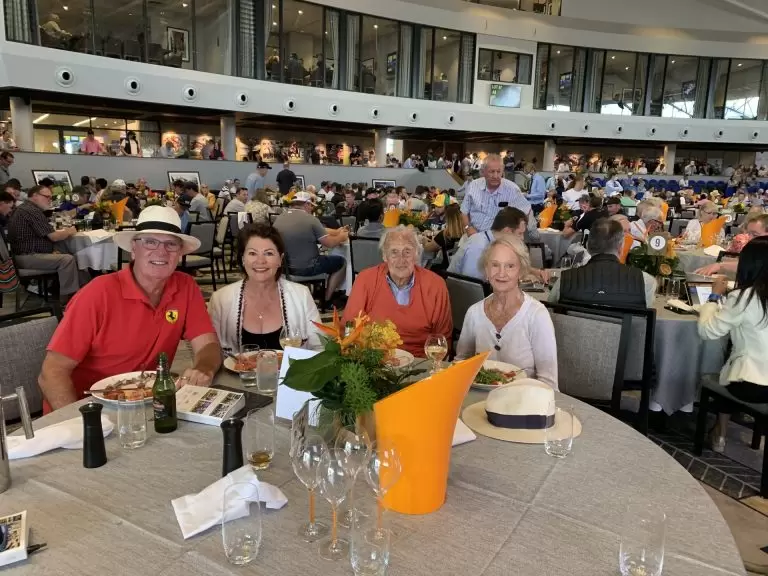
Frank and Jan at the races (Pic – Manlyobserver)






